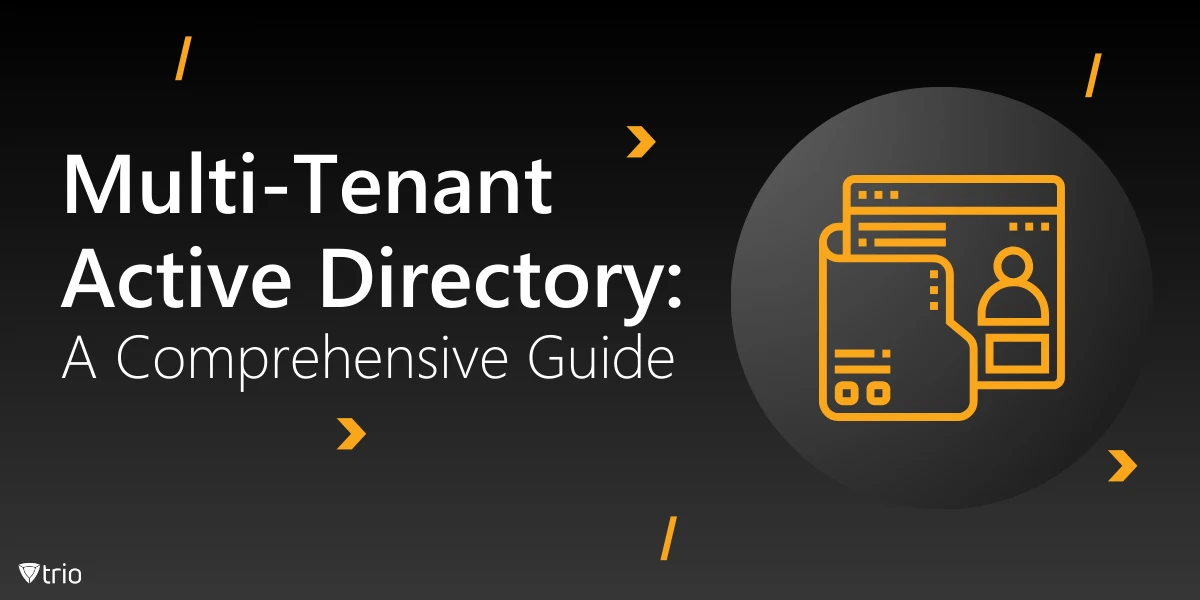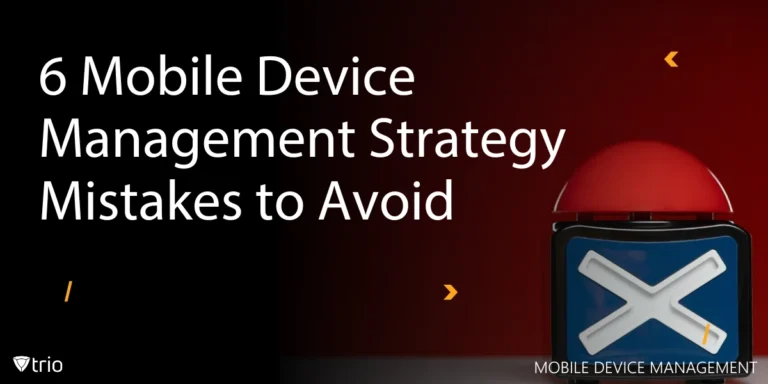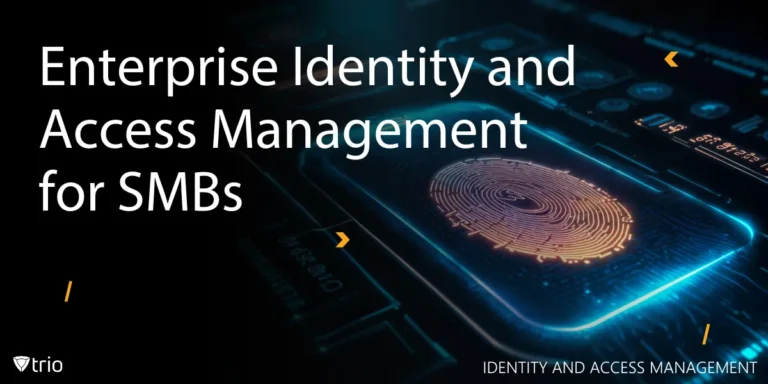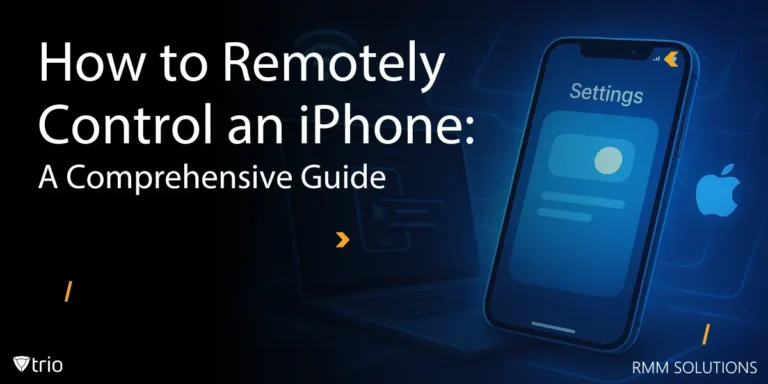In today's dynamic IT landscape, organizations are increasingly adopting cloud services and multi-tenant architectures to streamline operations and reduce costs. At the heart of this transformation lies Multi-Tenant Active Directory (AD), a powerful solution designed to manage and secure multiple tenants within a single Active Directory infrastructure. In this blog, we will delve deeper into the key components, benefits, challenges, and best practices associated with implementing Multi-Tenant Active Directory.
What Is Multi-Tenant Active Directory?
Multi-Tenant AD allows businesses, especially Managed Service Providers (MSPs) and enterprises with multiple divisions, to maintain isolated and secure environments for each tenant while still leveraging a centralized directory system. A Multi-Tenant Active Directory setup enables different organizations or business units to share resources, minimize infrastructure costs, and maintain autonomy over their environments. Each tenant operates in its own logically separated space while utilizing the common AD infrastructure. This architecture provides scalability, efficiency, and streamlined management, particularly for businesses serving multiple clients.
Multi-Tenant Active Directory solutions often integrate with cloud platforms like Microsoft Azure Active Directory, offering enhanced flexibility and remote accessibility. With proper implementation, organizations can efficiently handle user authentication, resource access, and administrative controls across multiple tenants. This ensures a balance between centralized management and tenant-specific autonomy.
Key Components of Multi-Tenant Active Directory
At its core, Multi-Tenant Active Directory consists of several critical components that enable seamless management and secure operations across multiple tenants. The first component is the Active Directory Forest, which serves as the foundation for multi-tenant architecture. Within the forest, multiple domains can be created, each acting as a separate tenant while sharing resources efficiently.
The second crucial component is Organizational Units (OUs), which are used to create isolated environments for each tenant. OUs enable administrators to define policies, permissions, and security settings uniquely for every tenant without affecting others in the forest. This granular level of control is essential for maintaining tenant isolation.
Global Catalog Servers form the third key component. These servers store searchable copies of directory objects across all domains, allowing for faster query responses and efficient cross-domain communication. Global Catalog Servers are especially useful in multi-tenant environments where cross-tenant authentication is occasionally required.
Lastly, Group Policy Objects (GPOs) play a pivotal role in maintaining security and consistency across tenants. GPOs allow administrators to enforce specific policies on user accounts, devices, and applications, ensuring compliance with organizational and regulatory standards.

Benefits of Multi-Tenant Active Directory
One of the primary benefits of Multi-Tenant Active Directory is cost efficiency. By consolidating multiple tenants into a single Active Directory infrastructure, organizations can significantly reduce hardware, software, and administrative costs. This shared architecture minimizes duplication of resources and allows for centralized management.
Another significant advantage is improved scalability. As businesses grow and onboard new tenants, Multi-Tenant AD can easily scale to accommodate increased workloads and users. This ensures that the IT infrastructure remains responsive and reliable even as the number of tenants grows.
Enhanced security and isolation are also key benefits. While tenants share the same infrastructure, their environments are logically separated, preventing unauthorized access and data breaches. Properly configured OUs and GPOs ensure that each tenant operates in a secure and compliant environment.
Lastly, streamlined administration is a major advantage of Multi-Tenant Active Directory. Administrators can manage user accounts, permissions, and policies from a central console while still allowing delegated control for tenant-specific administrators. This strikes a balance between centralized oversight and tenant autonomy. For example, it has applications for server management.
Challenges in Implementing Multi-Tenant Active Directory
Despite its numerous benefits, implementing Multi-Tenant Active Directory comes with several challenges. One of the most pressing issues is complex configuration and management. Setting up an AD infrastructure that supports multiple tenants requires careful planning, expertise, and continuous monitoring.
Security risks also pose a significant challenge. A misconfiguration or vulnerability in one tenant can potentially compromise the security of others. Regular audits, role-based access control, and stringent security measures are essential to mitigate such risks.
Another challenge is performance optimization. As the number of tenants grows, the AD infrastructure may experience slowdowns or increased latency if not appropriately scaled. Proactive performance monitoring and resource allocation are necessary to prevent bottlenecks.
Lastly, compliance and data privacy are concerns, especially in highly regulated industries. Different tenants may have varying compliance requirements, and administrators must ensure that each tenant adheres to their specific regulations without overlapping or conflicting policies.
Best Practices for Managing Multi-Tenant Active Directory
Effective management of Multi-Tenant Active Directory requires adherence to best practices. First and foremost, clear tenant isolation policies must be established. Organizational Units (OUs) and Group Policy Objects (GPOs) should be configured carefully to maintain strict separation between tenants.
Role-Based Access Control (RBAC) is another crucial best practice. Administrators should define and enforce roles with specific permissions for each tenant, preventing unauthorized access to critical systems and data.
Regular audits and monitoring are essential for maintaining the security and integrity of Multi-Tenant AD. Implementing logging mechanisms and auditing tools helps identify vulnerabilities, detect anomalies, and ensure compliance with organizational policies.
Lastly, scalability planning should not be overlooked. Organizations must anticipate growth and design their AD infrastructure to accommodate additional tenants without compromising performance or security.
How Mobile Device Management (MDM) Complements Multi-Tenant Active Directory
Mobile Device Management (MDM) solutions play an integral role in enhancing Multi-Tenant Active Directory deployments. MDM tools simplify user authentication and device management across multiple tenants, ensuring seamless access to resources and applications.
One key benefit of integrating MDM with Multi-Tenant AD is centralized policy enforcement. IT administrators can deploy security policies, device configurations, and access controls uniformly across multiple tenants, minimizing inconsistencies and vulnerabilities.
Improved endpoint security is another advantage. MDM solutions can monitor and secure devices connected to the AD infrastructure, ensuring compliance with tenant-specific security policies. Devices that fail to meet these requirements can be restricted or quarantined.
Lastly, automation and efficiency are enhanced through the integration of MDM and Multi-Tenant AD. Administrative tasks like user provisioning, software deployment, and policy enforcement can be automated, reducing manual workload and increasing operational efficiency.
Conclusion
Multi-Tenant Active Directory is a powerful solution for organizations managing multiple tenants within a single infrastructure. With its ability to centralize management, improve scalability, and enhance security, it serves as a valuable tool for MSPs, enterprises, and large organizations. However, successful implementation requires careful planning, adherence to best practices, and continuous monitoring.
By integrating complementary tools like Mobile Device Management (MDM), organizations can further optimize their Multi-Tenant AD deployments, ensuring secure and seamless operations. As businesses continue to grow and embrace digital transformation, Multi-Tenant Active Directory will remain a cornerstone of modern IT infrastructure.
Take control of your Multi-Tenant Active Directory management with Trio, an advanced MDM solution. Sign up for a free trial today and experience seamless directory management and security!
Get Ahead of the Curve
Every organization today needs a solution to automate time-consuming tasks and strengthen security.
Without the right tools, manual processes drain resources and leave gaps in protection. Trio MDM is designed to solve this problem, automating key tasks, boosting security, and ensuring compliance with ease.
Don't let inefficiencies hold you back. Learn how Trio MDM can revolutionize your IT operations or request a free trial today!





